|
Vasektomie |
||
 |
||
 Fig 1 |
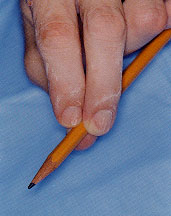 Fig 2 |
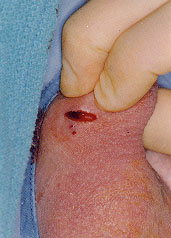 Fig 3 |
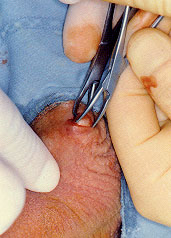 Fig 4 |
 Fig 5 |
 Fig 6 |
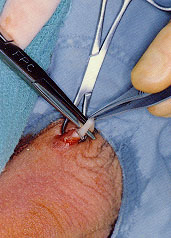 Fig 7 |
 Fig 8 |
 Fig 9 |
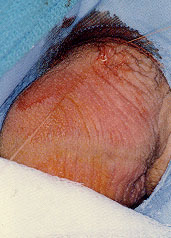 Fig 10 |
||
|
No-Scalpel Technique The no-scalpel, or Li, technique was developed in China in 1974 in the hope of improving the acceptance of vasectomy in that country. This technique differs from conventional vasectomy techniques primarily by the unique method of incision and delivery of the vas. A ringed extracutaneous vas clamp (Figure 13) is used to fixate the vas to the overlying skin, and a single midline incision is made by means of a sharpened clamp. Compared with other vasectomy techniques, the benefits of no-scalpel vasectomy include a shorter operating time,24 less pain and swelling, and faster recovery.25 Failure rates are similar to those associated with conventional techniques.26 Although not universally performed, no-scalpel vasectomy is increasing in popularity. The no-scalpel technique, with prostatic-end cautery and fascial interposition, combined with leaving the testicular end open, has been advocated as the "ideal technique."23 Links: www.vasektomie.de/faq.htm |
||